With 2016 well and truly over but 2017 still well ahead of us, the Council on Tall Buildings and Urban Habitat (CTBUH) took the time to review the world of tall buildings.
In their findings, they revealed that 128 buildings of 200 metres’ height or greater were completed around the world in 2016.
This number of skyscrapers around the world set a new record for annual tall building completions, beating 2015’s previous record of 114 and marking the third consecutive record-breaking year.
In their report on 2016 skyscrapers, CTBUH Year in Review: Tall Trends of 2016, CTBUH recorded the following key highlights.
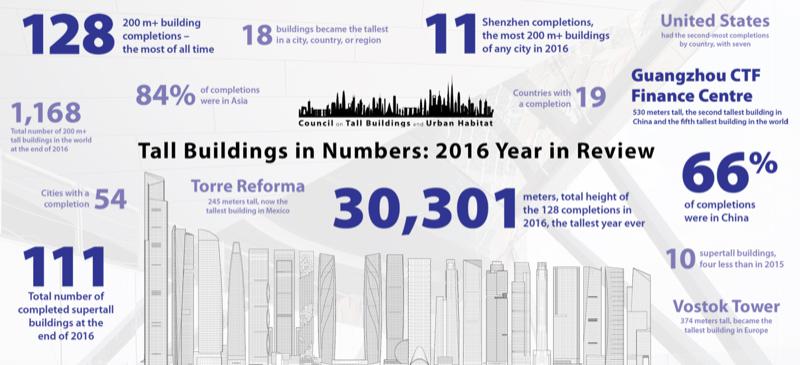
Of the 128 buildings completed in 2016, eighteen were 200-metre-plus buildings completed that became the tallest in a city, country, or region.
The tallest building to complete in 2016 was Guangzhou CTF Finance Centre, which stands as the tallest building in Guangzhou, the second-tallest building in China, and the fifth-tallest building in the world at 530 metres.
Asia retained its status as the world’s skyscraper epicentre in 2016, completing 107 buildings, representing 84% of the 128-building total.
The Middle East matched its 2015 numbers with nine completions in 2016, with North America experiencing a slight increase this year, up from four completions in 2015 to seven in 2016.
For the ninth year in a row, China had the most 200-metre-plus completions, with a record 84, overtaking by 24% its previous annual record of 68 in 2015.
The United States completed the second-most 200-metre-plus buildings with seven, a notable increase over the two buildings completed in 2015. Meanwhile, South Korea made the list with six completions, with Indonesia seeing five, and both the Philippines and Qatar completing four.
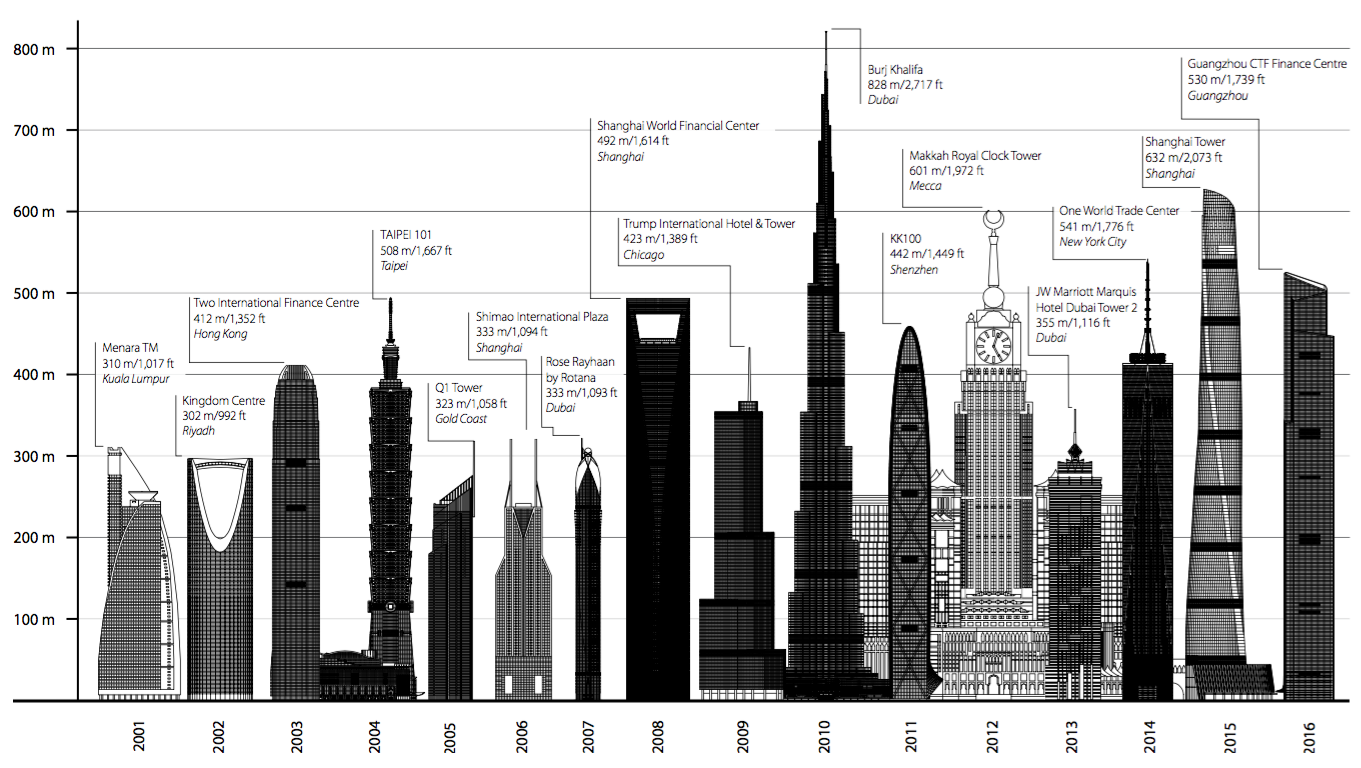
Tallest titles
“Tallest” titles also reigned supreme in 2016, with 18 completed buildings becoming the tallest in a city, country, or region. These include:
Vostok Tower (374 metres) completed to become the tallest building in Russia and Europe
MahaNakhon (314 metres) completed as the tallest building in Thailand
Guangzhou CTF Finance Centre (530 metres) completed as the tallest building in Guangzhou, the second-tallest in China, and the fifth-tallest in the world
Torre Reforma (246 metres) became the tallest in Mexico
Tajong Pagar Centre (290 metres) is now the tallest in Singapore
Gama Tower (286 metres) became the tallest in Indonesia
The Crescent City (210 metres) became the tallest building in Azerbaijan
Eton Place Dalian Tower 1 (383 metres) completed as the tallest building in Dalian, China
Tianjin Modern City Office Tower (338 metres) became the tallest in Tianjin, China
Wanda Plaza 1 and 2 (307 metres) completed as the tallest in Kunming, China
Greenland Centre Tower 1 (270 metres) became the tallest in Xi’an, China
Huayuan Centre Tower 7 (270 metres) completed as the tallest building in Changsha, China
Golden Eagle Plaza (252 metres) is now the tallest building in Kunshan, China
Poly Business Centre Office Tower (248 metres) completed as the tallest in Foshan, China
World Trade Centre 1 (215 metres) became the tallest building in Yiwu, China
Grand Hyatt Metrocentre (258 metres) completed as the tallest building in Taguig City, Philippines
Ilsan Yojin Y-City Tower 105 (230 metres) completed to become the tallest building in Goyang, South Korea.
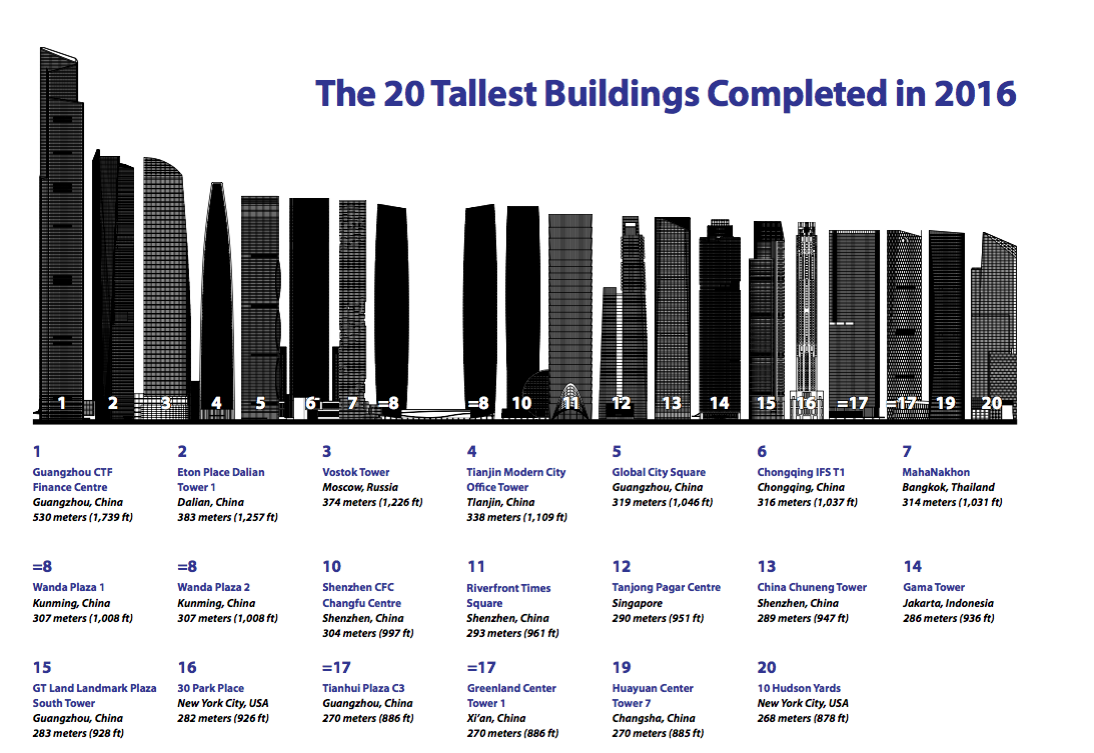
In each instance, the drivers behind these buildings remain the desire to establish identity, enhancing the skyline, to respond to urban population growth, and to maximise functional utility upon minimal land area.
Popular skyscraper functions
The report details a functional split for tall building completions in 2016 remains almost perfectly consistent with that of previous years. Office functions have by far the highest share, representing 52% of completions with 67, achieving a consecutive all-time record over 2015, in which there were 53.
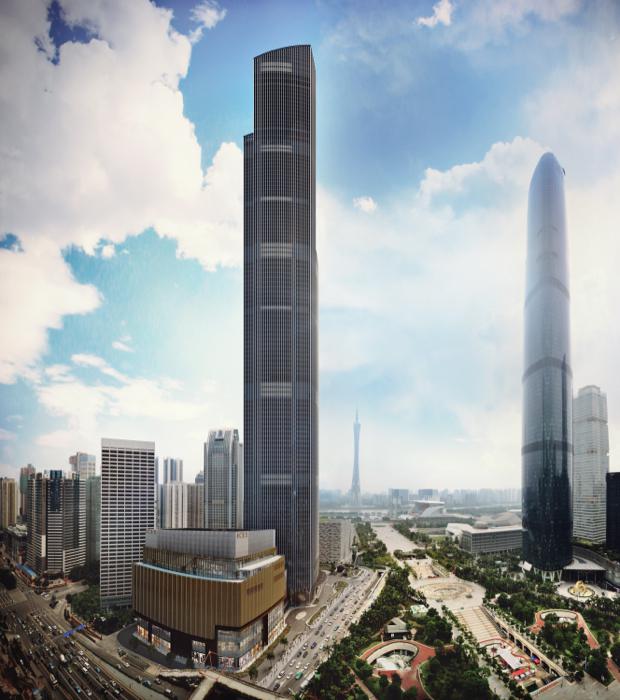
Guangzhou CTF Finance CentreMeanwhile, 38 buildings were completed for mixed-use purposes, representing 30% of the total and 16% of skyscrapers, or 20 of the total number, were erected as residential buildings. Only three all-hotel towers were completed in 2016, representing just 3% of the total. Despite the low number, CTBUH pointed out that hotel functions are critical components of many mixed-use developments, and so the low number of completions for hotel-only towers does not indicate a downward trend for the function altogether.
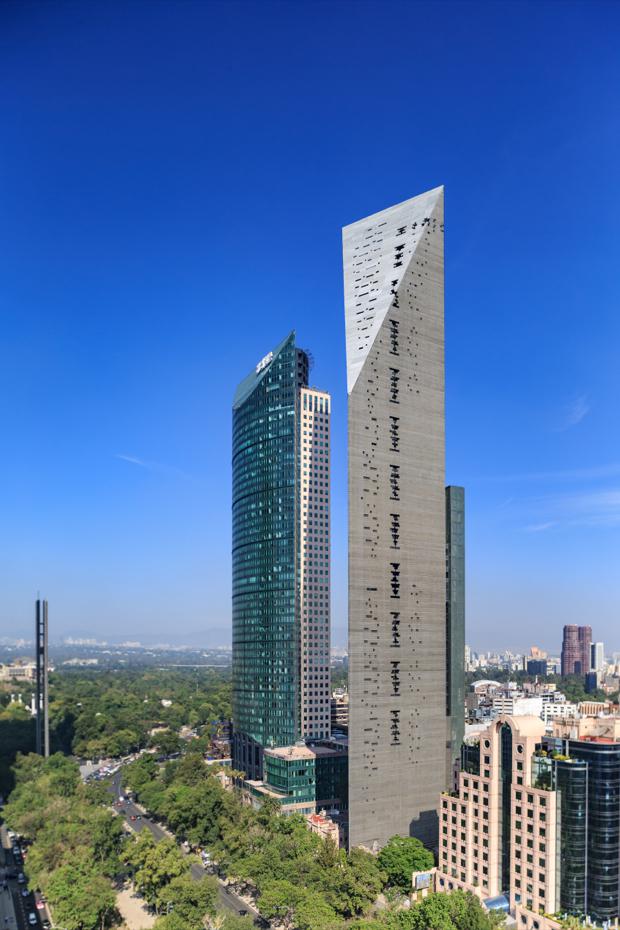
Torre Reforma, Mexico
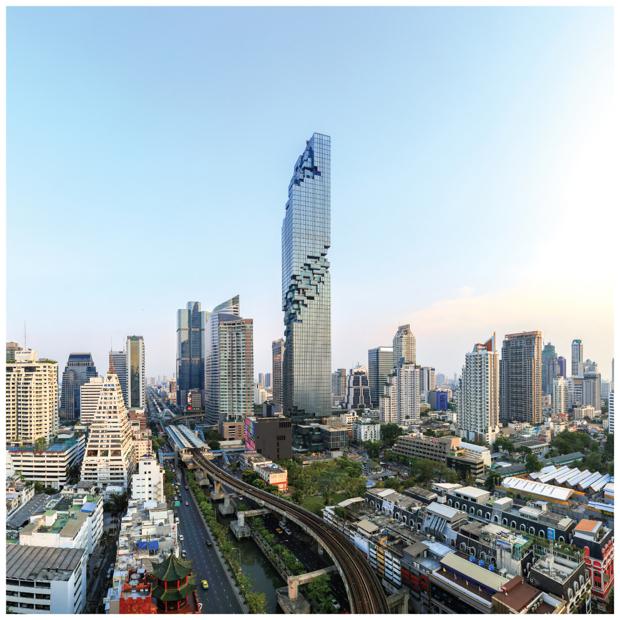
MahaNakhon, Bangkok
"This material trend is expected to continue to dominate, particularly as tall buildings continue to proliferate in seismically active regions like China, which mandate robust structural responses."Concrete construction took the remaining share of completions with 58, or 45% of the total. CTBUH attributes the significant use of concrete to a combination of concrete’s relative ubiquity and lower cost in many regions, as well as its comparative simplicity in construction, which would increase its appeal in regions with lower-skilled labor pools.

30 Park Place, New York CityIn 2016, not a single building of 200 metres or higher was completed with an all-steel structural system. The use of steel in tall buildings has almost completely transitioned into composite construction. At the time of developing this report, there were only nineteen buildings over 200-metres under construction that employ all-steel structural systems.
What was said about Australia?
Tall Trends of 2016
revealed that Australia experienced two completions in 2016: Vision Apartments in Melbourne (223 metres) and International Towers – Tower 1 in Sydney (217 metres).
"The annual trickle of tall buildings coming online in the country is expected to continue in the years ahead, with eleven 200-metre-plus buildings currently under construction or topped out, with completion years ranging from 2017 to 2020," the report said.
Images courtesy 'CTBUH Year in Review: Tall Trends of 2016'.













